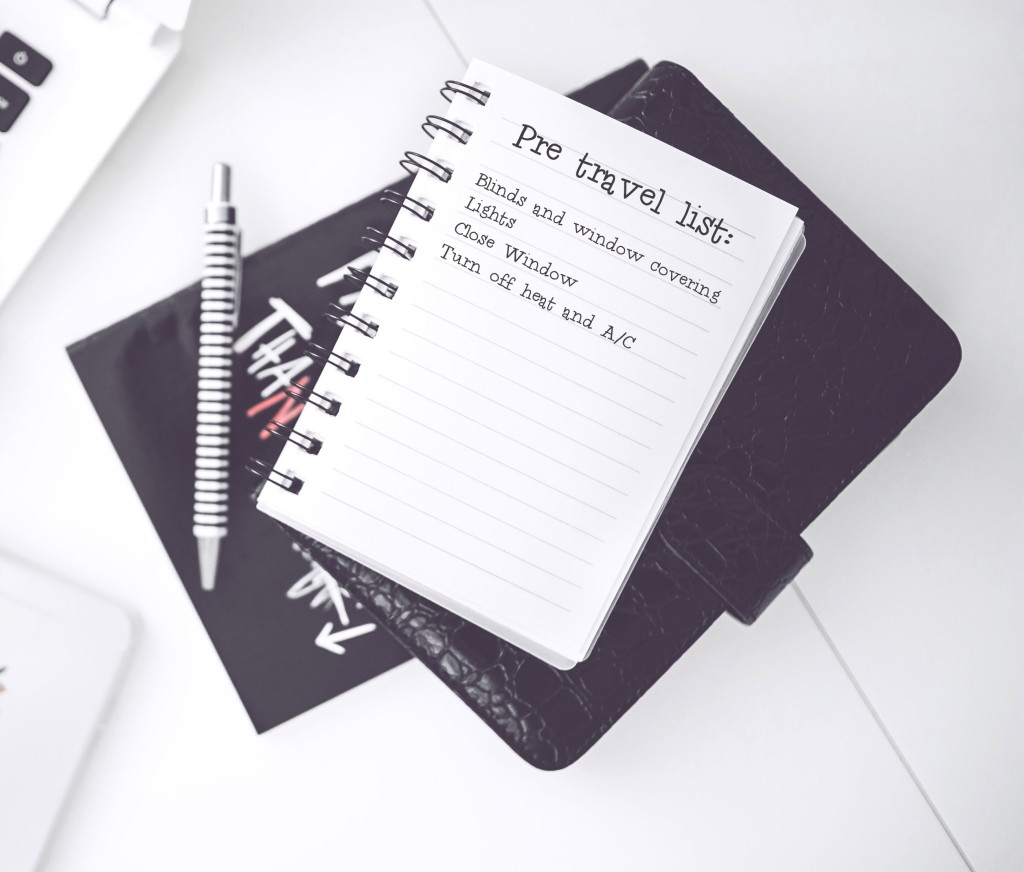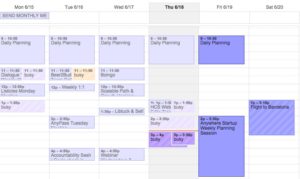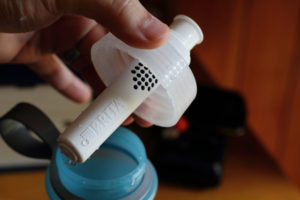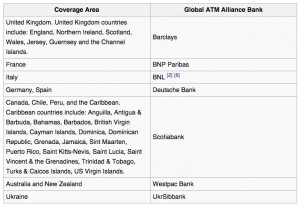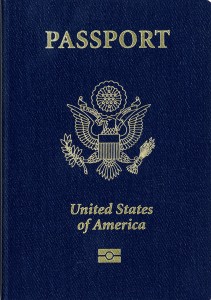Mobility Criteria #1: Create Daily Milestones
Do you use Evernote, Trello, iPhone apps, or some other list-creating resource?
There are so many apps and blogs and posts about how we can create and check off our lists BUT…
We don’t always focus on list prioritization so we don’t get done the things we need to get done.
And even when we do, it’s still just one big long list that seems like an endless abyss.
That’s why it is important to create milestones. Daily, weekly, and monthly milestones.
What are milestones and how are they different than goals?
Milestones vs Goals
If your list has tasks like “release feature 3.0,” that’s a GOAL.
Instead, a milestone is something you can achieve that day. A milestone is also broken into tasks.
Let’s look at an example:
GOAL (30 days) = Release feature 3.0
Milestone (today) = Set up new project in git
Tasks (supporting the milestone) =
- copy folder into local Sites directory
- create new git repository
- link local folder to online git repository
See the difference?
Basically, goals are long-term ideas of what you want to accomplish and milestones are the steps that you’re going to take to get there.
It’s About Hitting Goals
Milestones ultimately help you hit your goals.
One way to do this is to start with the end in mind and work backwards (see Steven Covey’s 2nd habit).
So…think about your business goals. What’s important to achieve this year? This month? This week? Now the tiniest chunk…today?
What can you do today that will have an impact on your business and move it forward?
Remember we are aiming for success, so you want to make your milestones achievable.
If your milestones aren’t achievable or feel overwhelming, then they are too big. Reduce them until they are the right size for you to accomplish them.
Rome wasn’t built in a day!
Sure, you might not get everything done on your to-do list, but getting 3 things accomplished is much better than getting 6 things half-finished all because you were trying to rope the moon.
Success Begets Success
Setting achievable milestones is also important in order to feel “done” or that you’ve accomplished something at the end of the day.
This makes you want to have that feeling over and over again so, in that way, success begets success.
Plus, there’s nothing more rewarding than deleting a task or milestone because you’ve accomplished it.
It’s done. No looking back.
You’ll sleep better, have more peace, and less stress.
Remove Guilt
Feeling overwhelmed and under-accomplished will kill you so you also have to remove guilt if you don’t accomplish every milestone you’ve set for yourself.
Things happen. If you can’t achieve them, just put them on tomorrow’s milestone list, and start over. Forgive yourself and move on.
This is important!
I am a perfectionist and a hard worker. If I can’t accomplish something, sometimes I take it personally. But we are human. We all fall. The important thing is to get back up and keep on going.
No strings. No emotion. Just get back in the ring. The sooner the better.
Are you ready to start creating your own daily, weekly, and monthly milestones?
Practical Exercise: Create Your Own Milestones
You are probably full of energy, ideas, and to-do’s that have been bubbling in your head as you’ve been reading. Now is the time to write them down and then narrow down the list.
Ask yourself: What’s been lingering that if you just took the time to get it done today you’d 1) feel better and 2) be able to focus on your other pressing milestones that you want and need to get to?
Right now, I want you to take out a piece of paper or your device and write:
What are my milestones today?
- _________________________
- _________________________
- _________________________
- _________________________
(Remember: Milestones must be achievable.)
Here’s an example list I’ve had:
Milestones today:
- Call / arrange the dentist (been waiting on this one forever even though it only takes 5 minutes!)
- Call Raj and ask about his schedule for tomorrow and Friday, lock in interview time
- Call Aweber and ask about transferring existing subscriptions
- Release Father’s Day campaign for Beer2Buds
These are small tasks, but they are each profound. Let’s take a deeper look at each one and why it was so important to my success…
- Health. If we don’t prioritize things like health they will come back to haunt us later.
- Meetings. This meeting was for hiring a new employee to do sales/biz dev.
- Task management. Calling a provider and technical setup for my user base.
- Business Development. Crafted and launched a newsletter, outbound content marketing to drive inbound sales.
Even though each one was important, notice that I didn’t add things that took more than 2 hours maximum and, at minimum, 5 minutes.
Now that you have your milestones set, commit to achieving them first thing in the morning.
Use Your Mornings to Your Advantage
Your most important part of the day is the morning. You’re freshest, your mind is the clearest, and you have the most energy.
After 4-5 hours of hard core productivity, your battery will start to run low. So use the time when you’re at your highest energy to accomplish those milestones.
If, once these are accomplished, you want to take on more, by all means do. But what we’re trying to avoid here is burnout or creating an endless list that will not get done.
What we’re also trying to accomplish is the creation of successful habits. Feeling good, feeling accomplished, having enough rest to keep your mind fresh for the next set of milestones.
We want achievable goals that we can reach in one day. If a task is longer than 2 hours, it’s too big. Break it down into smaller pieces.
Do this and, at the end of the day, you feel accomplished for what you’ve been able to do versus overwhelmed by what hasn’t gotten done. Then, do the same for tomorrow.
Having a hard time staying focused on hitting your milestones?
Refer Back to the List
When I get distracted or sidetracked, as often happens, I remember I have a list. I refer back to it and, in all her glory, there she is, telling me what to do.
I’m instantly back on track.
The beauty about having it written down? Have you ever found yourself in this scenario:
You’re hard at work. You’ve had your caffeine, read you’re online motivation, and you’re fired up, ready to get at it.
About 45 minutes into your hard work, your co-worker walks in. He got a haircut and a piercing. You comment on it.
“How was your weekend?” you ask. And it begins.
Thirty minutes later, ugh, you’re wondering, “What was I gonna do again?”
You’re adjusting in your seat. You take a bathroom break. “What was I gonna do again?”
Twenty minutes later the mailman comes. Your new Kindle arrived. Yes! You can’t play with it now because you have a meeting in 20 minutes. But you open it, turn it on, and show it off. Then you diligently put it away.
After your meeting, you sit down. The client was angry. You’re exhausted. You stare at your screen. “What was I gonna do again?”
“Oh yea, eat lunch.”
Before you know it, the day is gone and you’re left with nothing done.
Now…this is what a day looks like when you’re being productive, in the same scenario:
Each time you ask the question “What was I gonna do again?” you Ctrl+Tab back to your notepad.
There is your list. You read it and it refocuses you.
You are now back on track.
Manage yourself by what you wrote in the morning when you were in your most creative and productive zone.
Crack the whip on yourself! If you want to, say “yeehaw, back in the saddle again” each time. Or not. It’s up to you.
But when you create daily, weekly, and monthly milestones—and meet them—you’ll feel that kind of excitement!
This is one of 15 articles, each one addressing the 15 different mobility criteria necessary to live and work anywhere. To learn more about the remaining mobility criteria, click here.

